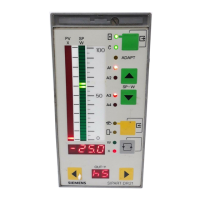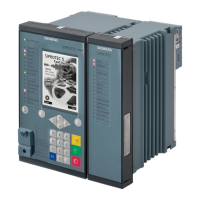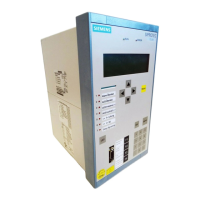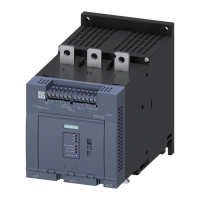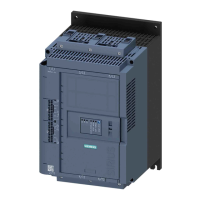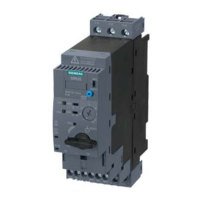1 Technical Description
1.5 Functional Description
1.5.8 Complex Functions (Arithmetic blocks c, d, h)
Manual
68
SIP ART DR24 6DR2410
C79000-G7476-C153-03
Clock CLoc
b1
b2
b3
b4
b5
b6
b7
b8
Lo
Time from start
Time in interval
Interval
Clock stop
Start
Stop
Reset
Fast
Preselec. v. SES
”Pr.2
”.3
”4
”5
”5
”7
Preselec. Pr. 8
Lo
ncon
A2
A1
Lo
Lo
Lo
Lo
Lo
Lo
Lo
Lo
Lo
# .01
# .02
# .03
# .04
# .05
# .06
# .07
# .08
# .09
# .10
# .11
# .12
CLoc.1
.1A ∩
.2A ∩
.3A ∩
.4A #
.5A ∩
.6A ∩
.7A #
.8A #
.9A #
.10.(A)#
.11.(A)#
.12.(A)#
.13.(A)#
.14.(A)#
(CLPA)
CLFo,CLCY,CLSb,CLPr,CLti
CLA1,2 CLb1...8
&
<
d0_.F
n
---
Consecutive number
of the arithmetic block
No. in the cycle
The clock can be defined once in FdEF in the arithmetic blocks d0*.F. T wo analog outputs and
8 digital outputs can be assigned to a common timebase -- with a maximum 40 time intervals --
with the clock.
These 40 intervals can be distributed between up to 8 independent sub--routines. An appropri-
ate number of intervals is assigned to the programs CLPr 1 to 8. (parameter CLPr).
The time intervals of the programs are entered per interval according to the selected clock for-
mat (private parameter CLFo) in [h, min] or [min, s] (private parameter CLti). Then the time in-
tervals are assigned the values for the analog outputs (private parameter CLA*) or the status of
the digital outputs (private parameter CLb*). The programs defined in CLPr can run once, sev-
eral times or cyclically (private parameter CLCY). The clock process can be accelerated in
steps for test purposes (private parameter CLSb). The clock is controlled by the inputs Start,
Stop, Reset and Fast.
The controlling source for the program preselection is defined with d*.05.
d*.05 = low preselection through the inputs d*.06 to d*.12
d*.05 = high preselection through the SES (Status ST--CLOCK)
If the inputs d*.06 to d*.12 are low , the 1st program runs after Start. A high signal at one of the
preselection inputs d*.06 to d*.12 defines the program 2 to 8 to be processed which is activated
with the edge Start = Low/High. The time process can be monitored by the outputs time from
Start, time in the interval, interval display and Clock stop.
The following components are described in detail below:
D Private parameters
D Inputs d*.01 to d*.12
D Outputs d*.1A to d*.14.(A)
